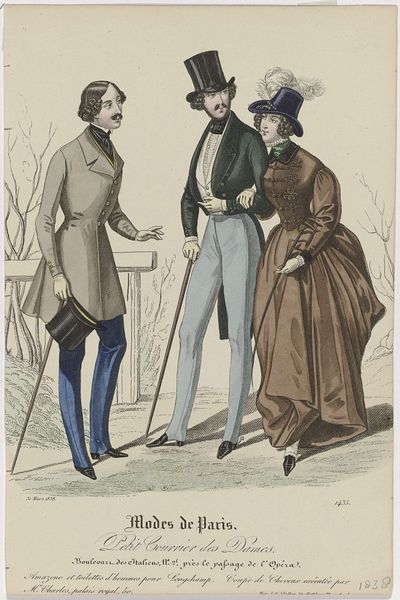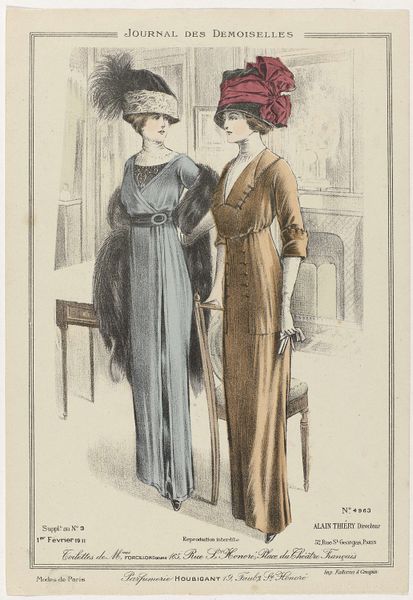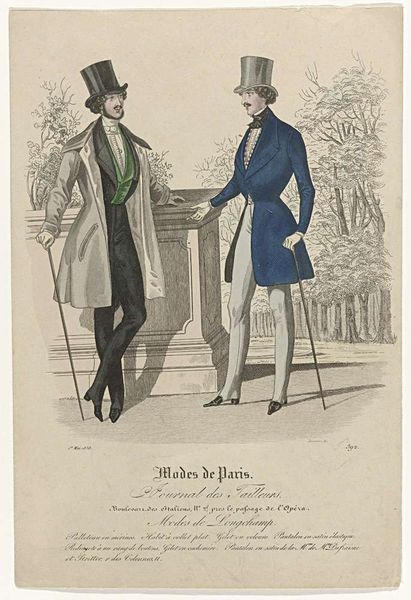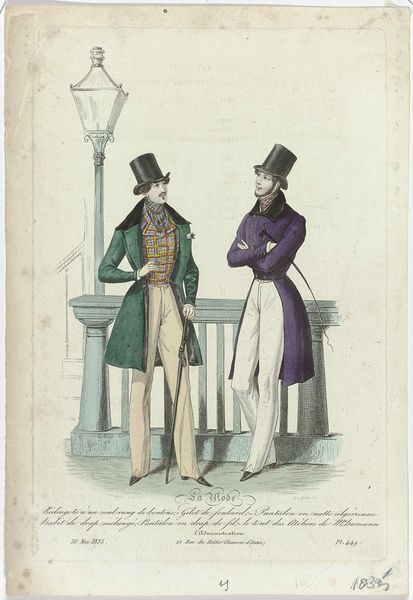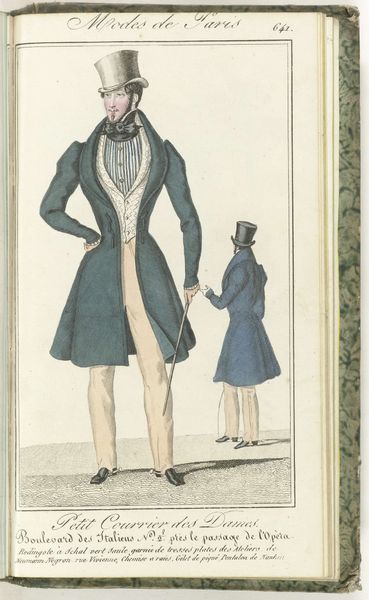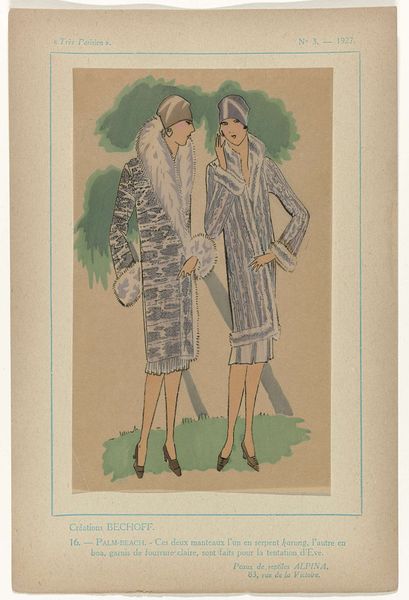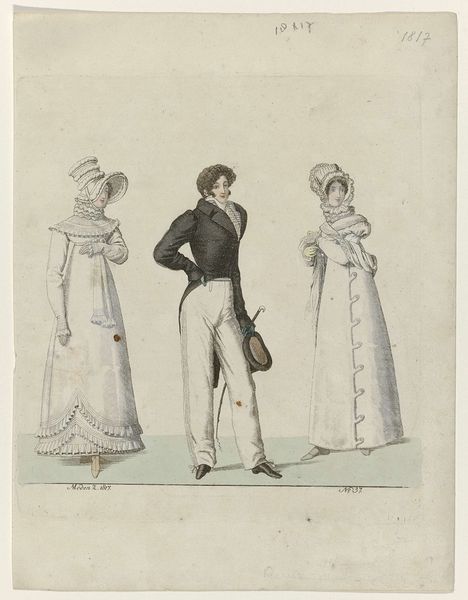
print, watercolor
#
portrait
# print
#
watercolor
#
romanticism
#
watercolour illustration
#
genre-painting
Dimensions: height 223 mm, width 145 mm
Copyright: Rijks Museum: Open Domain
Curator: Here we have a print titled "La Mode, ca. 1835: Costumes d'Hommes," believed to be created around 1835. It's an anonymous piece employing both watercolor and print techniques. Editor: Immediately striking is the theatricality! The figures are posed so deliberately. There’s almost a paper-doll quality to them, despite the apparent intention to convey high fashion. The color palette also lends a dreamy, almost sentimental aura to the whole scene. Curator: Indeed. Focusing on "La Mode" reveals specific sartorial signifiers that can provide insight into the identity and class aspirations of men of that era. What's also interesting is the textual element, naming various tailors and shops in Paris. This connects fashion inextricably with capitalism and commerce. Editor: Absolutely, and that list speaks volumes about cultural values and aspiration through external appearance. Let’s not forget the symbolism in the details, though: The hat styles of each of these figures immediately signal to their social strata, from bourgeois elegance to the Ottoman inspired headpiece of the lounging figure. It’s all iconography! The cane as an attribute of the dandy too. Curator: Yes, you’re quite right. This connects to contemporary discourse surrounding menswear in the 1830s. Consider also, that while appearing to display freedom of choice through consumption, societal pressures often constricted options, specifically for individuals who were outside the margins. We have to be conscious about accessibility within social classes as well. Editor: It reminds us how fashion isn’t simply about individual expression but becomes a social code and an almost ritualized way of signaling your belonging to a particular group, a familiar social theme. I see that now; a powerful cultural display rendered delicately, that belies it. Curator: Understanding this allows us to deconstruct ideas of what it meant to perform masculinity through clothing in 1830s Parisian society and helps us interpret present day gender representation and constructions. Editor: Well, now, when I look back, I see a great example of the power of clothing, the enduring effort of constructing a symbolic identity through the sartorial arts. It's a study of contrasts, after all. Curator: Precisely. Fashion remains a stage, where performances of self intersect with societal scripts and commercial agendas. Always important when analyzing an era!
Comments
No comments
Be the first to comment and join the conversation on the ultimate creative platform.

